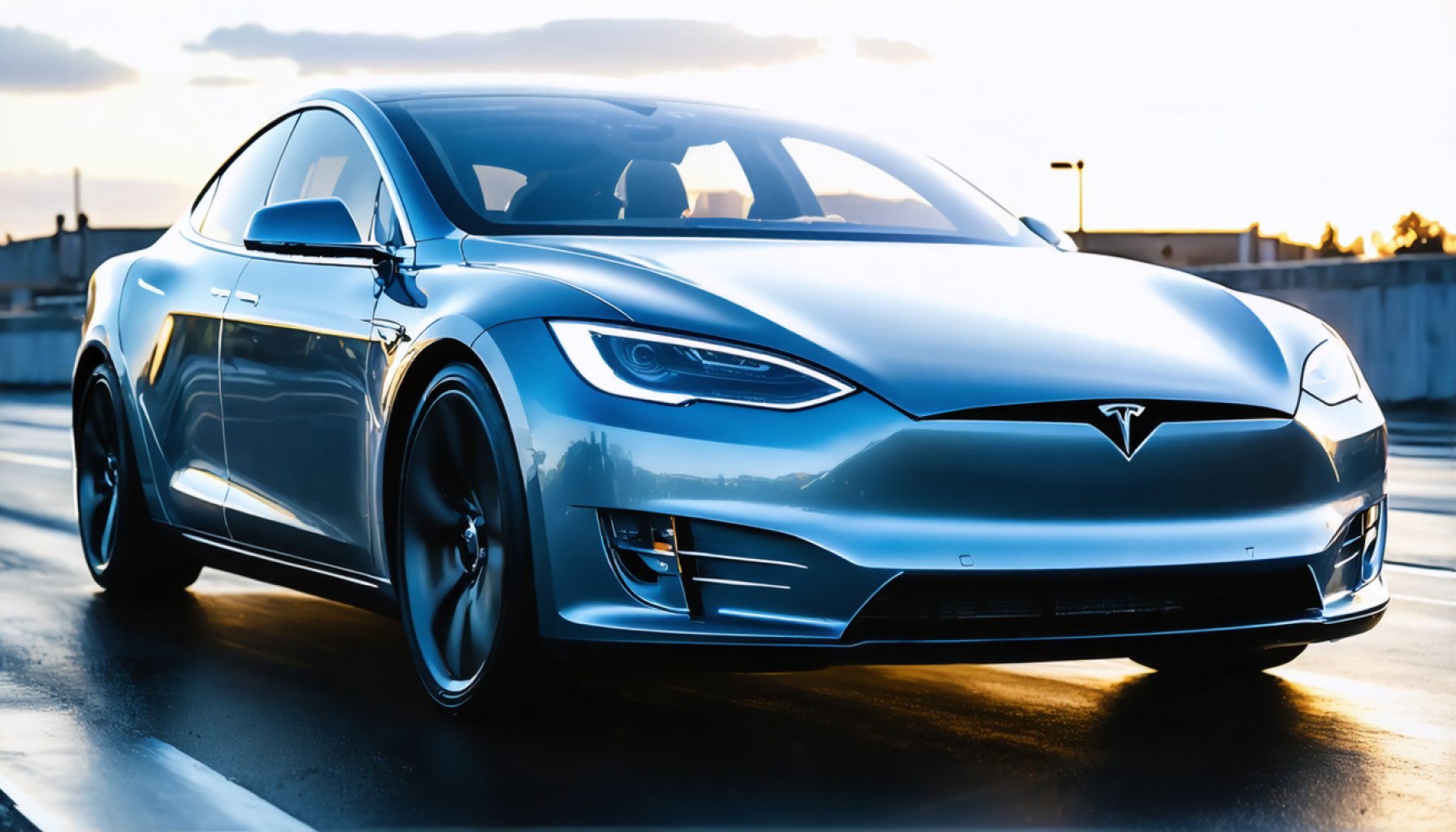- David Lau, a key figure in Tesla’s technological success, has departed, potentially impacting the company’s software strategy.
- His leadership significantly advanced Tesla’s vehicle intelligence, cloud integration, and manufacturing efficiency.
- Lau was instrumental in enhancing Tesla’s user interface, autonomous driving, and seamless cloud connectivity.
- His departure highlights the critical role of strong software foundations in Tesla’s success.
- Tesla now faces the challenge of maintaining its innovative edge while navigating leadership changes.
- This transition underscores the importance of balancing visionary leadership with fresh perspectives to continue shaping the future.
A key architect of Tesla’s technological prowess, David Lau, has bid adieu to the electric vehicle titan, signaling a potential shift in the company’s software strategy. Lau, who dedicated over a decade to transforming Tesla’s digital landscape, climbed the ranks to become vice president of software engineering in 2017. His exit marks the end of an era marked by impressive advancements in vehicle intelligence, cloud integration, and manufacturing efficiency.
Throughout his tenure, Lau played a pivotal role in orchestrating the software symphony that gives life to Tesla’s fleet, from the intuitive user interface and autonomous driving capabilities to the seamless connectivity with cloud services. The quiet hum of software engineering, often overshadowed by flashy hardware, became Tesla’s lifeline under his stewardship. This unsung heroics underlined how essential robust software foundations are for the automaker’s success story.
As Lau steps away, the automotive world waits with bated breath to see who will fill his shoes and how they might redirect Tesla’s digital future. This departure is not merely a farewell but a window into the evolving dynamics within a company that has long stood at the forefront of innovation.
In an industry where innovation is the currency, Lau’s departure serves as a timely reminder of the crucial role dedicated leadership and visionary engineering play. Tesla, synonymous with groundbreaking technology and daring leadership, now faces the challenge of maintaining its edge while adapting to the broader changes happening within its leadership.
This leadership transition emphasizes the delicate balance between sustaining the revolutionary momentum set by visionaries and the invigorating potential of fresh perspectives. Tesla’s journey showcases an essential takeaway for any industry: the constant need to harmonize visionary leadership with the innovative drive essential for shaping the future.
Tesla’s Software Evolution: What David Lau’s Departure Really Means for the Future
Introduction
David Lau, a pivotal force behind Tesla’s software development, has left the company, sparking curiosity about the future direction of Tesla’s technological strategies. While his name might not be as well-known as Tesla’s iconic CEO, Elon Musk, Lau’s influence touched nearly every digital facet of Tesla’s operations, from vehicular intelligence to cloud integration. His departure opens a Pandora’s box of potential developments, raising important questions about the brand’s road ahead.
The Evolution of Tesla’s Software Landscape
Under Lau’s leadership, Tesla’s software evolved significantly, aligning seamlessly with the hardware to deliver a cutting-edge automotive experience. Here’s a closer look at the aspects where his impact was most profound:
– User Interface and User Experience (UI/UX): Tesla vehicles are known for their intuitive interfaces. Lau’s focus on optimizing human-machine interaction set new standards in automotive UI/UX, making it user-friendly and aesthetically appealing.
– Autonomous Driving Technologies: Lau was instrumental in advancing the development of Tesla’s Autopilot and Full Self-Driving (FSD) systems, integrating sophisticated AI and machine learning capabilities.
– Connectivity and Cloud Integration: Ensuring vehicles were updated wirelessly via over-the-air updates was a priority. Lau’s work allowed Tesla to maintain and enhance its cars post-purchase, a feature now considered a benchmark in the industry.
Controversies and Limitations
Although Tesla has made strides in vehicle automation, its FSD technology has been criticized for reliability issues. The programming complexities and ethical considerations around autonomous vehicles remain a hotly debated topic, with Tesla’s leadership transitions potentially impacting future developments.
Market Forecasts & Industry Trends
– Transition to Full Autonomy: As the industry moves toward full vehicular automation, Tesla will need to maintain its position at the forefront. Lau’s absence could bring new challenges or innovations in achieving true full autonomy.
– Increased Competition: With giants like Google, Uber, and traditional automakers investing heavily in autonomous tech, the departure of a key architect like Lau could open gaps that competitors might exploit.
Real-World Use Cases and Innovations
– Vehicle-to-Infrastructure Communication: With the constant evolution of smart cities, Tesla’s software will need to adapt to communicate efficiently with urban infrastructure. Lau’s groundwork could set the stage for such advancements.
– Energy Management Systems: Tesla’s integration of battery management and energy solutions with its automotive software offers significant potential for growth, especially in sustainability-focused markets.
Insights & Predictions
– New Leadership and Direction: With Lau’s departure, Tesla may see a fresh vision in software strategy, potentially fostering innovation in areas not yet explored, such as better integration with other Tesla technologies like Solar Roofs and Powerwalls.
– Sustainability Initiatives: The new leadership might double down on sustainability and efficiency, reflecting broader tech industry trends of intertwining green tech with cutting-edge innovation.
Actionable Recommendations
1. Stay Informed about Industry Innovations: Keep an eye on emerging trends in autonomous technology and software development to understand the potential new directions Tesla might take.
2. Leverage Connectivity: Utilize Tesla’s continuous software updates to keep your vehicle at peak performance and explore emerging features.
3. Explore Tesla’s Ecosystem: Consider integrating other Tesla products (like Powerwall) to maximize the synergy and efficiency Tesla aims to deliver.
For ongoing news and updates, you might consider visiting the Tesla website.
Conclusion
David Lau’s departure is both a closing chapter and a fresh opportunity for Tesla. As the automotive world watches, Tesla’s response to this transition could redefine its software and technological approach. Navigating these changes requires balancing the preservation of past breakthroughs with the excitement of new possibilities. By focusing on innovation, connectivity, and sustainability, Tesla can continue to set benchmarks in the electric vehicle industry.
